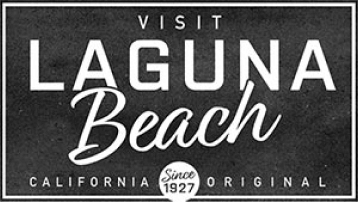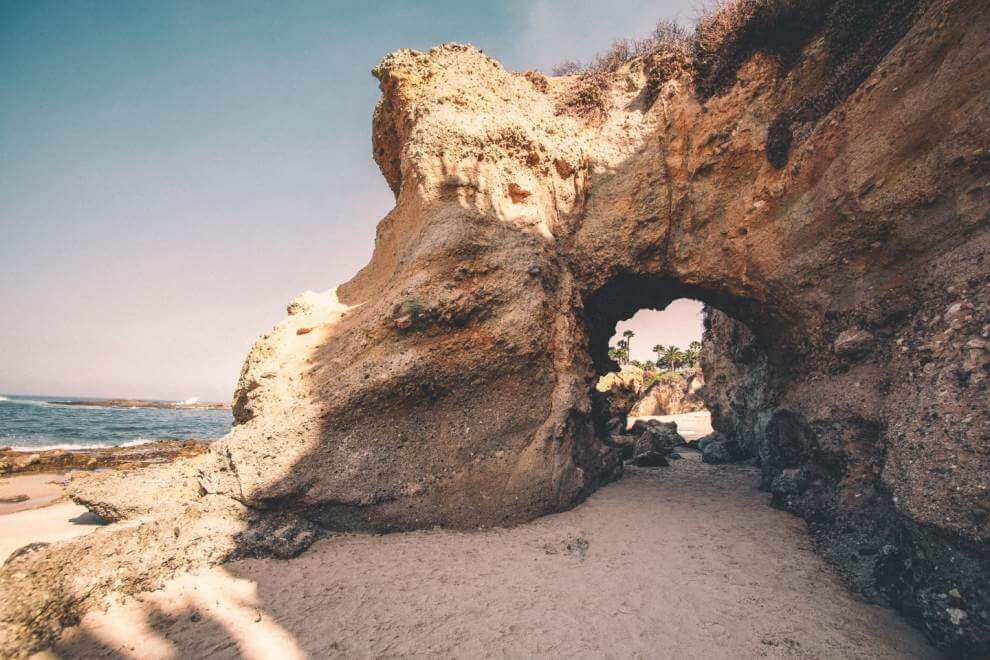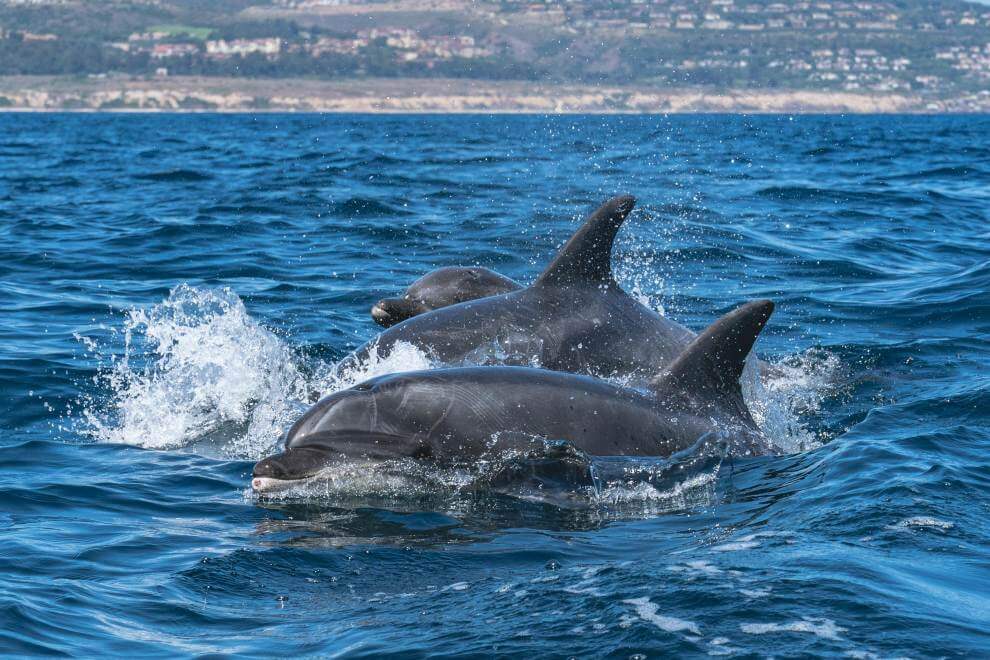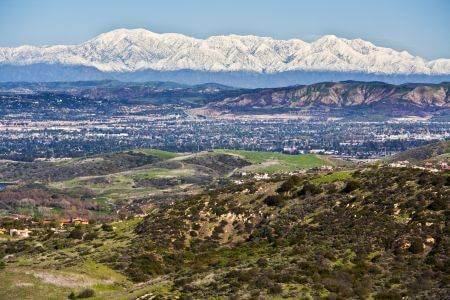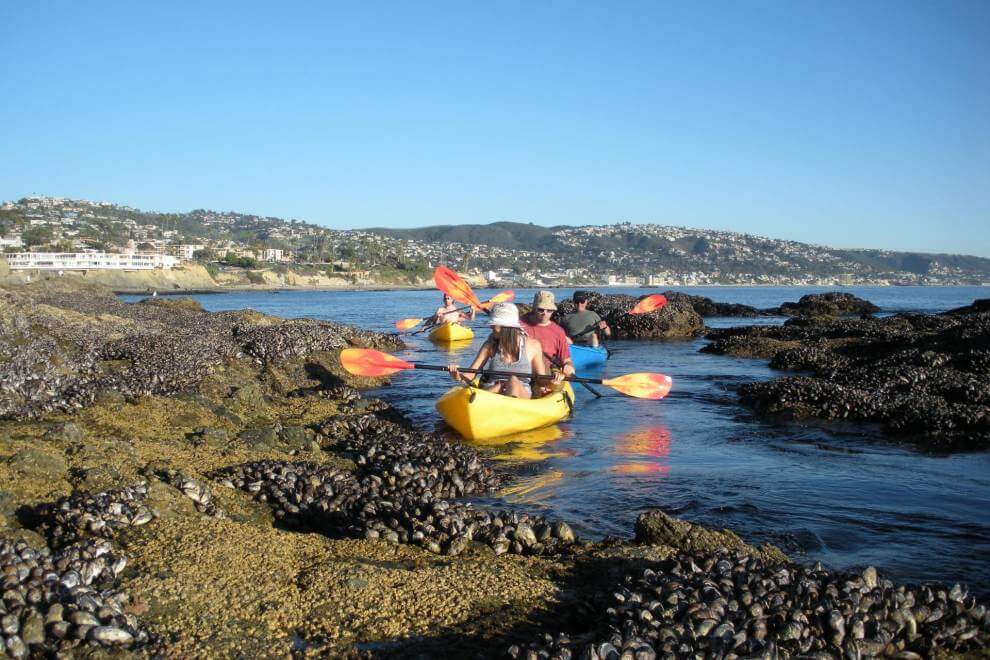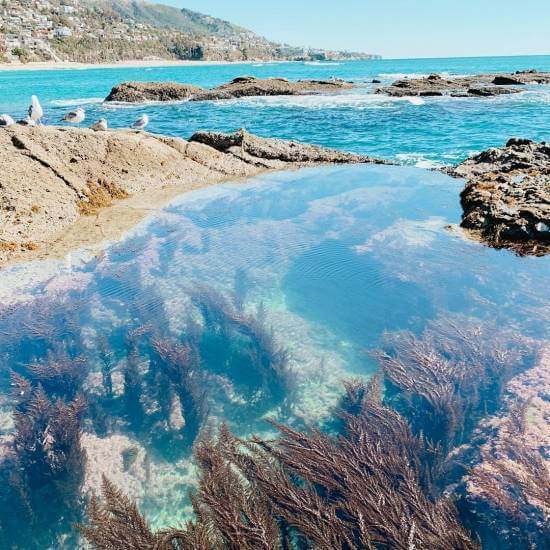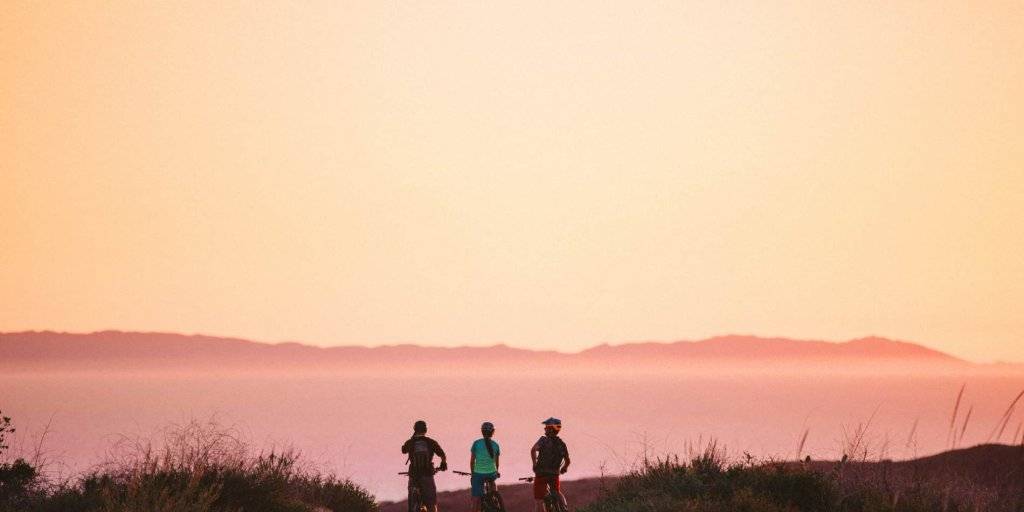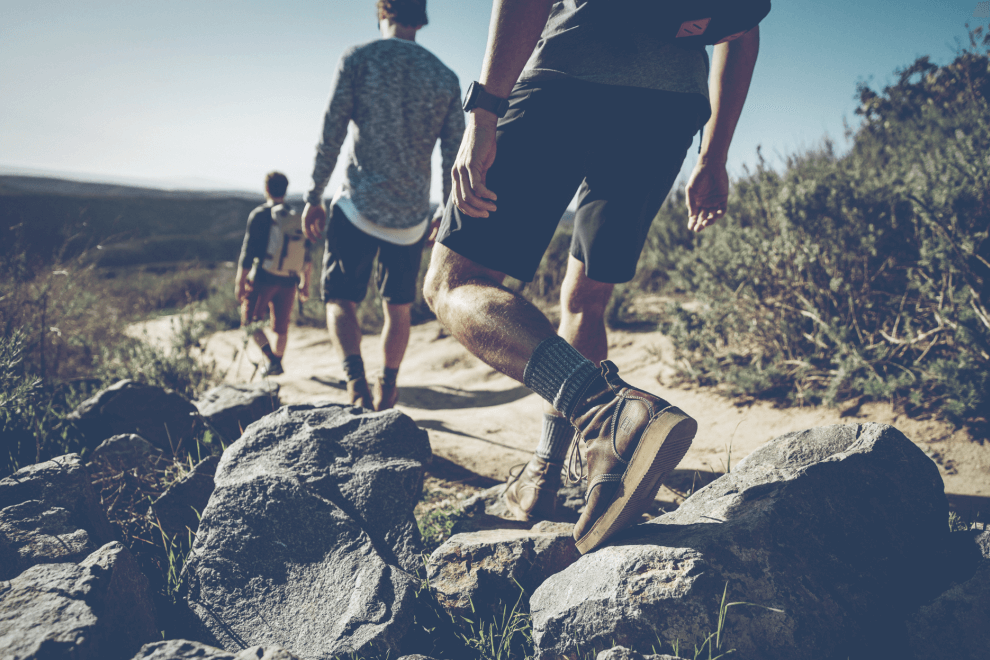
Sustainability and Conservation
Laguna Beach is paving the way for conservation.
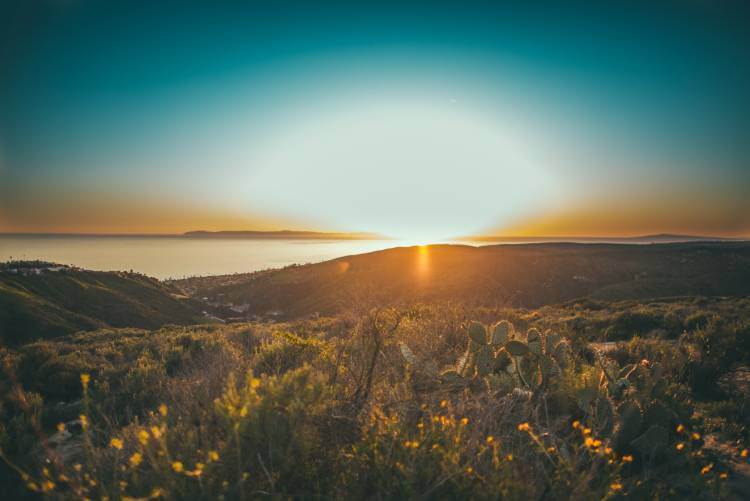
We have a long history of conservation in Laguna Beach that dates back to the Indigenous tribes of the area and the first homesteaders along our shores. We pride ourselves on prioritizing our planet and maintaining a place you can feel good about visiting.
With 7 miles of pristine coastline to enjoy and more than 22,000 acres of wilderness to explore, Laguna Beach offers an unparalleled outdoor experience, you can only get in California. From skimboard and surfing competitions, to the quiet beauty of the tide pools, and hills that go for miles, there is something for everyone to discover
Leave No Trace Initiative
Leave No Trace is an internationally recognized conservation organization. Their mission is to use the power of science, education and stewardship to ensure a sustainable future for the outdoors and the planet.
Laguna Beach has partnered with Leave No Trace to develop six principles that encapsulate the long standing priority of the city to protect both the land and sea that surrounds Laguna Beach. These spaces are affectionately referred to by locals as the green belt and the blue belt.
Laguna Beach Leave No Trace Six Sustainability Principles
1. KNOW BEFORE YOU GO
- Before traveling to see us, we encourage you to look up our area to Plan Your Visit. Being prepared for your visit will protect Laguna Beach’s lands and waters and ensure you have a great time!
- Laguna Beach is a single-use plastic free city. Be prepared by packing reusable water bottles, coffee mugs, food containers and utensils for your visit. Repackage food whenever possible to reduce the amount of trash you bring on your trip.
- We also are a smoke-free city. This protects public health and greatly reduces the potential for catastrophic wildfires caused by improper disposal of cigarette butts. Smoking is not allowed in public places including beaches, sidewalks, alleys, streets, outside of bars, or green spaces.
- When planning to visit our beaches be sure to know ahead of time which of the 30 beaches and coves are best suited for your planned activities. Check on tides and current ocean conditions as they change daily. Lifeguards are found at most beaches with the headquarters stationed at Main Beach.
- Our historic lifeguard tower at Main Beach has info on water safety so be sure to check it out. A green flag means it’s safe to swim, yellow means use caution and red indicates strong surf or rip currents are present and it is best to stay out of the water. For your safety, always obey beach closures and recommendations on when to not enter the water.
- The parking areas in Laguna Beach fill up quickly. Try to visit during off-peak times such as early morning and on weekdays. Before you go, use the Laguna Beach Parking app to find parking. We also have year-round trolleys that you can take throughout the city to avoid parking issues.
2. STICK TO TRAILS AND SAND
- The Laguna Greenbelt is roughly 7,000 acres and connects to additional protected areas totaling 20,000 acres that protects vital plants and animals. When enjoying the city’s green spaces, walk and ride on designated trails to protect trailside plants and wildlife habitat. Travel single file in the middle of the trail, even if wet and muddy, to prevent trails from widening. Respect all trail closures including those for mud or restoration.
- If you need to take a break or stop to enjoy the view, step off the trail and onto a durable surface to avoid damaging local plant life while allowing others to pass. Durable surfaces include rock, sand, gravel and dry grass.
- Cutting switchbacks might save you some time, but it won’t save your energy. Conserve your energy and prevent erosion by traveling on the designated trail.
- When at the coast, stay on the sand and avoid climbing on or jumping off of beachside cliffs and rocks. These areas can be unstable because of erosion and may also be dangerous when the tide is high.
3. DISPOSE OF TRASH PROPERLY
- Pack it in, pack it out. Pack out everything you bring in with you. This includes food scraps such as apple cores, orange peels and nut shells. These items can take years to decompose, are unhealthy food sources for wildlife and can pollute water sources and ocean water.
- Repackage food before your outing to limit the amount of waste you need to carry out. Bring a bag to collect any garbage you do create and to pick up other trash you may find along the way.
- Always pick up and properly dispose of your pet’s waste. Pet waste contains harmful bacteria such as giardia that can make humans or other animals sick and contaminate water sources. You can find dog hours for the beach HERE.
- When traveling through Laguna Beach, never flick cigarette butts from your car. Help prevent catastrophic wildfires by properly disposing of your cigarette butts.
4. LEAVE IT AS YOU FIND IT
- Our beaches and tidepools are set within the city’s Marine Protected Area (MPA). This means that visitors may look, but taking rocks, shells or living creatures is not allowed. Even empty shells, rocks and washed-up kelp help support the local ecosystem and are protected in their natural resting place.
- While Laguna’s shoreline may seem like the perfect place to cast a line, fishing or taking lobsters or shellfish is not allowed. Not allowing these activities enhances the protection of Laguna’s great underwater ecosystems.
- Because of the MPA, motor boats are also not allowed in Laguna Beach. If you are looking to enjoy the water by boat, check out one of the neighboring harbors in Dana Point or Newport Beach or skip the motor and rent a kayak or paddle board from a local outfitter.
- Brush off your boot and bike tires before and after enjoying Laguna’s greenbelt trails. Doing so will help prevent the introduction of harmful invasive plant species.
- Leave flowers and other plants as you found them for others to enjoy and protect the local environment.
5. RESPECT WILDLIFE AND SEALIFE
- Laguna Beach is home to spectacular tidepools that contain an abundance of underwater life. Many of the animals living in these pools, such as hermit crabs, mussels, and sea stars are fragile. Picking up these creatures can interrupt their natural behaviors and even injure them.
- Check the tides before visiting our tidepools. This will allow you to see more sealife and make sure you stay safe.
- Observe but don’t touch wildlife, big and small, land and sea. Even small critters on the beach can be harmed when humans interact with them.
- Human food is unhealthy for animals and can cause them to become aggressive or even dangerous. Never feed wildlife or sealife and store all food and trash so they cannot get access to it.
7. BE CONSIDERATE OF OTHERS ON BEACHES AND TRAILS
- Crowds are common in Laguna Beach, especially in popular areas. Remember anytime you are in a crowd; you are the crowd. Have patience and be considerate of those you are sharing the outdoor space with. It will go a long way!
- Be considerate of other trail users by knowing when to yield. Bikers yield to all hikers. When hiking downhill you should always give those traveling uphill the right of way, they will need to keep their momentum.
- Before passing others, politely announce your presence and let them know you’re passing. If riding a bike, slow down and pass other visitors with care.
- Keep yourself and others safe by staying in designated beach areas where lifeguards are present.
- Pay close attention to ocean conditions and mind the flag warnings for safe water activities.
Laguna Beach Green Belt
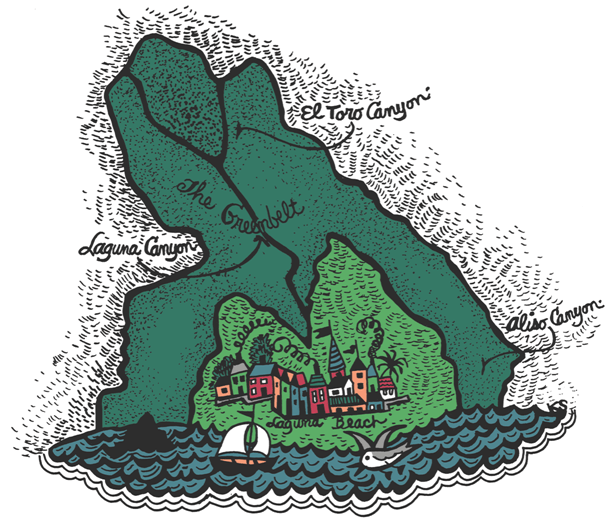
The green belt is composed of 20,000 acres of protected land called the Laguna Coast Wilderness Park. The first 5,000 acres of the land was saved from development by the residents of Laguna Beach in 1989. They executed a sit-in on the land to stop a housing development. That then grew to encapsulate land that reaches to the city of Irvine, Aliso Viejo and Laguna Hills.
Laguna Beach Blue Belt
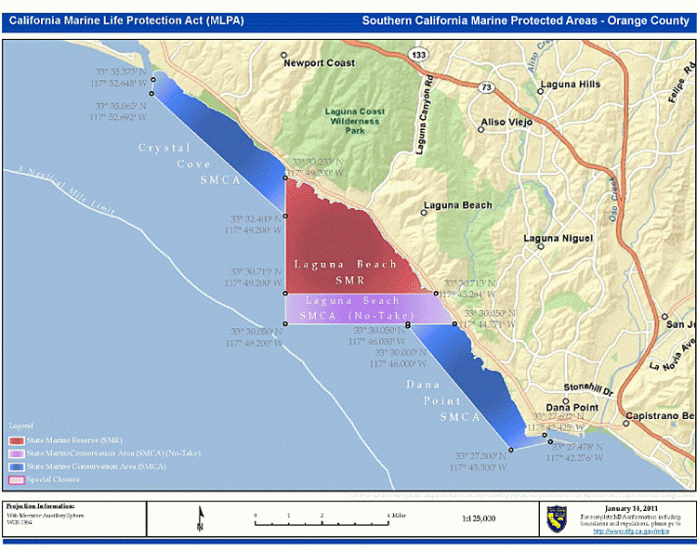
The blue belt is made up of three Marine Protected Area (MPA) and covers the area of Crystal Cove (north Laguna Beach) to the southern shores at Table Rock beach, the full 7 miles of the city. The MPAs was designated in 2012, and since then we have seen the rebound of sea life and the ever important giant kelp beds.
City Initiatives and Sustainability Ordinances
Laguna beach has long been on the forefront of conservation. We were the first California city to be plastic free and the first to become a zero balloon zone. We’re also proud to be smoke free and straw free, and are known as the Nation’s Most Water Wise City. By taking these steps to mitigate plastic trash and pollution we have significantly reduced both in our water and on our land.
Additional Resources About Sustainability in Laguna Beach
- Laguna Canyon Foundation
- Laguna Ocean Foundation
- Crystal Cove Conservatory
- Pacific Marine Mammal Center
- Kelp Festival
- Art + Nature Festival
- The Blue Belt Organization
- The Green Belt Organization
- OCMPAC Orange County Marine Protected Area Council
©Leave No Trace: www.LNT.org
